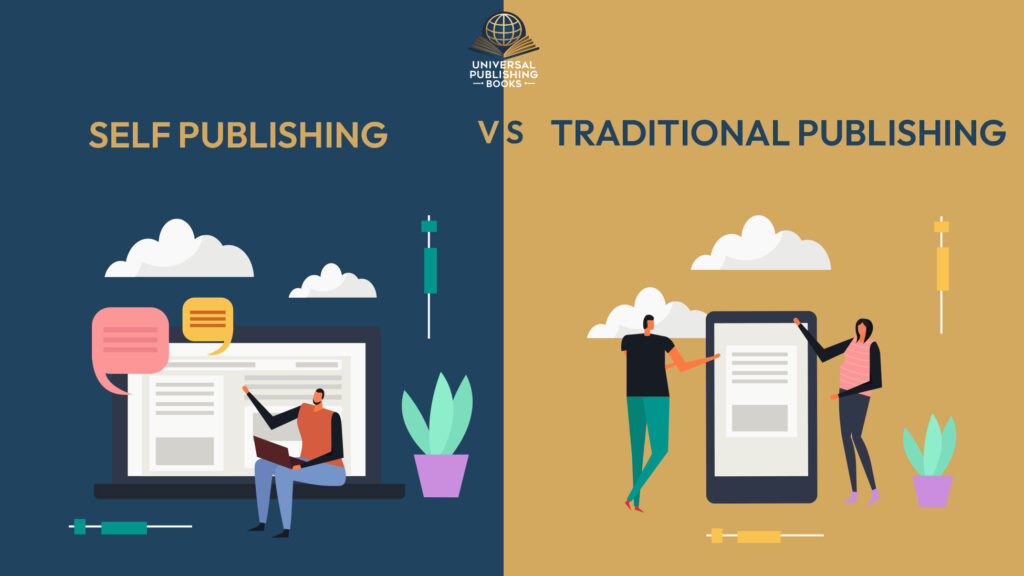Every writer faces a critical decision once their manuscript is complete: should they pursue traditional publishing or take the self-publishing route? Both paths have advantages and challenges, and the choice often depends on an author’s goals, resources, and expectations. Understanding the differences between these two forms of Book Publishing can help writers make informed choices. In this article, we’ll break down the pros and cons of traditional and self-publishing, compare costs and royalties, and explore which option may be best depending on your writing career goals.
Understanding Traditional Book Publishing
Traditional Book Publishing involves submitting a manuscript to a publisher or literary agent. If accepted, the publisher invests in editing, design, printing, marketing, and distribution. In exchange, the author signs a contract and typically gives up some creative and financial control.
Key features of traditional publishing:
-
Professional Support: The publisher handles editing, cover design, and formatting.
-
Wider Distribution: Books often reach physical bookstores and libraries.
-
Credibility: Being published by a well-known company adds prestige.
However, traditional Book Publishing is competitive and selective. Many manuscripts face rejection, and even accepted authors often wait months or years before their book is released.
Understanding Self-Publishing
Self-publishing has transformed Book Publishing, giving authors full control over their work. Through platforms like Amazon Kindle Direct Publishing (KDP), IngramSpark, or Draft2Digital, writers can publish their books in both print and digital formats.
Key features of self-publishing:
-
Independence: Authors retain creative control over content, cover, and pricing.
-
Faster Publishing Timeline: Books can be published in weeks instead of years.
-
Higher Royalties: Authors may keep 60–70% of profits depending on the platform.
The downside? Self-publishing requires investment in editing, design, and marketing. Without these, the quality may suffer, and books may struggle to gain traction in the crowded marketplace of Book Publishing.
Pros of Traditional Book Publishing
-
Credibility and Prestige – Authors gain recognition when associated with established publishers.
-
Professional Editing and Design – Publishers provide skilled editors and designers.
-
Distribution Power – Books appear in bookstores, libraries, and literary events.
-
Advance Payments – Many traditional deals include upfront advances against royalties.
For authors seeking recognition in the literary world, traditional Book Publishing often feels like the ultimate goal.
Cons of Traditional Book Publishing
-
Lack of Control – Authors may not control cover design, pricing, or marketing strategies.
-
Long Waiting Periods – Publishing timelines can stretch to years.
-
Low Royalties – Authors often earn only 8–15% per book sold.
-
High Rejection Rates – Securing a deal is difficult without an agent.
These drawbacks make some writers question whether traditional Book Publishing is worth the wait.
Pros of Self-Publishing
-
Full Creative Control – Authors decide every detail, from cover art to pricing.
-
Higher Royalties – With up to 70% profit share, earnings can surpass traditional deals.
-
Faster Publication – Books can be released almost immediately after completion.
-
Flexibility – Authors can update content, covers, or marketing at any time.
For entrepreneurial authors, self-publishing is an empowering way to control their Book Publishing journey.
Cons of Self-Publishing
-
Upfront Costs – Editing, cover design, and marketing are the author’s responsibility.
-
Marketing Challenges – Without a publisher’s backing, visibility is harder to achieve.
-
Perceived Credibility Gap – Some readers and reviewers still favor traditionally published books.
-
Time-Consuming – Authors must juggle writing with business and marketing tasks.
Self-publishing can be rewarding, but it demands commitment and resources.
Comparing Costs and Earnings
Traditional Book Publishing usually requires no financial investment from the author. Instead, the publisher covers costs, but royalties are lower. Self-publishing may require hundreds to thousands of dollars upfront for editing, cover design, and marketing, but the royalties are much higher.
For example:
-
Traditional publishing: 10% royalty on a $15 book = $1.50 per sale.
-
Self-publishing: 70% royalty on a $5 eBook = $3.50 per sale.
Over time, self-published authors can potentially earn more, provided they market effectively.
Distribution Differences
Distribution is a major factor in Book Publishing decisions.
-
Traditional publishers have established channels with bookstores, libraries, and wholesalers.
-
Self-published authors rely mostly on online platforms like Amazon, which dominates eBook sales.
While traditional publishing offers broader physical reach, self-publishing offers immediate digital access to global readers.
Marketing Responsibilities
In today’s Book Publishing landscape, marketing is essential regardless of the path chosen. Surprisingly, even traditional publishers expect authors to promote their books through social media, blogs, podcasts, and events. Self-published authors bear the full weight of marketing, but they also have the freedom to create personalized campaigns.
Successful authors often build strong personal brands that transcend publishing models.
Which Path Is Right for You?
The choice between traditional and self-publishing depends on your goals:
-
Choose Traditional Publishing If:
-
You seek prestige, awards, and bookstore distribution.
-
You prefer professionals to handle editing, design, and marketing.
-
You’re patient and willing to face rejections.
-
-
Choose Self-Publishing If:
-
You want independence and full creative control.
-
You prefer faster timelines and higher royalties.
-
You’re ready to handle or outsource marketing and design.
-
Some authors even combine both paths, using self-publishing for certain projects while pursuing traditional deals for others.
Hybrid Publishing: A Middle Ground
Hybrid Book Publishing blends aspects of both approaches. Authors pay for certain services but maintain more control and higher royalties than traditional contracts allow. This path can be ideal for writers who want professional support without sacrificing ownership.
The Evolving Future of Book Publishing
The publishing industry is constantly changing. With the rise of audiobooks, eBooks, and digital platforms, self-publishing is gaining more legitimacy. At the same time, traditional publishers are focusing on high-demand genres and established authors. The future of Book Publishing will likely involve a blend of both worlds, offering authors greater flexibility and opportunities.
Conclusion
The decision between traditional and self-publishing is not about which is better, but which is right for your goals. Traditional Book Publishing provides credibility, distribution, and support but requires patience and sacrifices in control. Self-publishing offers freedom, higher royalties, and speed but demands effort and investment. Ultimately, the best choice depends on whether you see yourself as a writer seeking prestige or an entrepreneurial author building a personal brand. Whatever path you choose, remember that Book Publishing is a journey of persistence, passion, and creativity—and your story deserves to be shared with the world.



